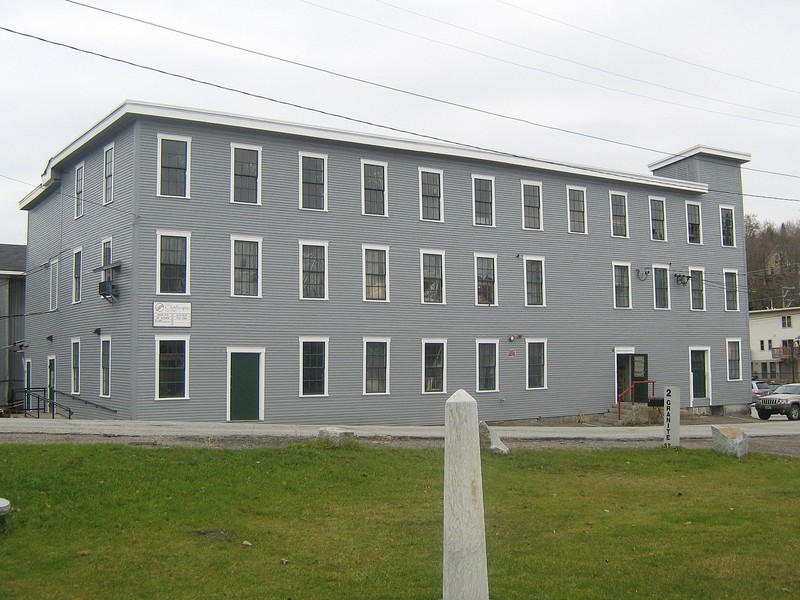National Clothespin Factory
Introduction
Text-to-speech Audio
Images
National Clothespin Company factory in Montpelier, Vermont. Last U.S. manufacturer of wooden clothespins

Backstory and Context
Text-to-speech Audio
The wood-framed National Clothespin Factory (1918) stands as a monument to the factory life that played a significant role in shaping the history of Vermont (and great New England) history and shaping of Vermont and New England. Small, family businesses dominated the United States clothespin industry, many of which operated in New England. However, the advancement of automatic, heated dryers and foreign competition led to the decline of the industry; the Montpelier factory served as the last one of its kind in the country.
Montpelier, the capital city of Vermont, gained its charter on October 21, 1780, with an initial size of 23,040 acres. Mills quickly grew popular in the city and region (grist-mills, saw-mills, wool-mills), many taking advantage of the abundance of timber (certainly, for making clothespins) and the local rivers, which helped power to the factories until steam power arrived in the last decades of the nineteenth century. The nearby residential area speaks to the early culture of mill life as factories needed plenty of workers, and most all of them lived close to the mills.
The advancement of railway lines into Vermont helped mills improve their viability, both becuase they could efficiently ship goods and also receive supplies. And, despite improvements in technology, as well as the arrival of electricity, automobiles, and airplanes, several mills and factories in New England survived well into the twentieth century.
The National Clothespin Factory survived from the 1880s through the first decade of the 2000s, including the historic building from 1918 - 2003. However, the industry as a whole significantly declined after World War II because of the invention of the electric dryer. Moreover, during the 1960s, imported clothespins from Asia and Europe (often less expensive) only served to accelerate the decline. Indeed, clothespin industry representatives attempted unsuccessfully to convince Congress to halt the import of clothespins.
As a result, the fifteen clothespin factories operating in New England during the 1930s fell to only five by the 1980s. And, in 2003, The National Clothespin Company of Montpelier, Vermont shut its doors as the last American wooden clothespin manufacturer.
The factory's wooden frame also speaks to the connection between mill life in New England and the region's wealth of available lumber. The thick forests made mill creation an easy investment for early entrepreneurs, as wood could be used for heating (including in the homes of workers needed to keep the factory operating), build homes, factories and of course produce goods. The National Clothespin Company, for instance, used an astounding 500,000 board-feet of lumber per year to make clothespins. As a result, much of the region's forests suffered significant declines, notably during the nineteenth century. Thus, the building also represents the choices society made regarding its resources; first relying heavily on water and wood and now relying more on electricity, hence the rise and fall of the clothespin industry.
Sources
Andre, Elizabeth, Phillip Barlow, Roger Cuiffo, Stephanie Gordon, Eileen Heideman, Nicole Janton, Mary Stadalnick, and Tiffany
Cumbler, John T. Reasonable Use: The People, The Environment, and the State: New England 1790-1930. New York: Oxford University Press, 2011.
Mitzman. "Nomination Form: National Clothespin Factory." National Register of Historic Places. nps.gov. December, 2005. https://npgallery.nps.gov/NRHP/GetAsset/NRHP/05001422_text.
Sinclair, Ward . "U.S. Clothespin Industry Squeezed by Imports." Washington Post (Washington D.C.) June 3rd 1978. https://www.washingtonpost.com/archive/politics/1978/06/03/us-clothespin-industry-squeezed-by-imports/c0606a46-18ac-46dc-88ef-6541f7a437c8/.
By Mfwills - Own work, CC BY-SA 3.0, https://commons.wikimedia.org/w/index.php?curid=8676929
